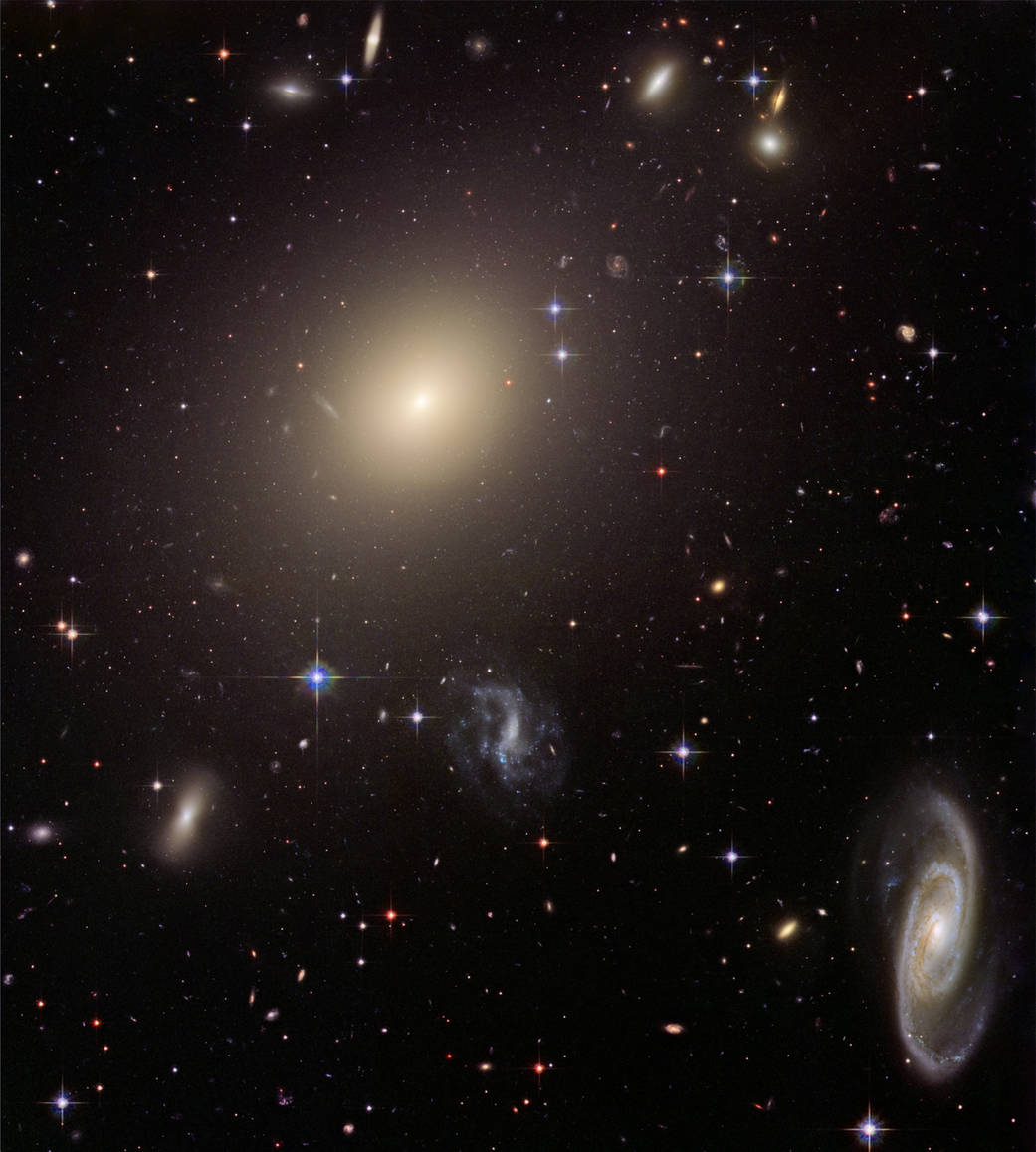
This image from NASA’s Hubble Space Telescope shows the diverse collection of galaxies 450 million light-years away in cluster Abell S0740 near the constellation Centaurus.
The giant elliptical ESO 325-G004 looms large at the cluster’s center. The galaxy, as massive as 100 billion of our suns, is home to thousands of globular clusters, small compact groups of hundreds of thousands of stars that are gravitationally bound systems. These clusters are dispersed spherically and uniformly in the outer halo of the elliptical and make their way around the center of the galaxy over the course of millions of years. Several foreground stars and background galaxies are also visible within the halo of this bright galaxy.
Other fuzzy elliptical galaxies dot the image. Some have evidence of a disk or ring structure that gives them a bow-tie shape. Several spiral galaxies are also present. The starlight in these galaxies is mainly contained in a disk and follows along spiral arms.
Recently, astronomers discovered that ESO325-004 is a “gravitational lens,” caused when the focusing power of an enormous mass making up a galaxy causes the light from some background object, probably a distant “dwarf” galaxy, to be deflected and magnified. As a result, the more distant galaxy appears brighter and distorted into the shape of an arc, or ring. Gravitational lensing is a rare occurrence because it requires an almost perfect alignment of a distant galaxy with an intervening one that has enough mass to gravitationally focus the light.
This particular system is unique because it is closest known example of strong gravitational lensing and is close enough for the dynamics of its stars to be studied in detail using spectrographs on large ground-based telescopes, revealing how fast the stars in the galaxy are moving.Image credit: NASA, ESA, and The Hubble Heritage Team (STScI/AURA)

























